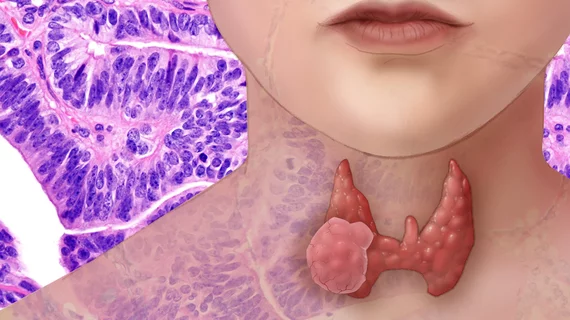Thyroid CT using less radiation, less contrast material provides sufficient image quality
Exposing patients undergoing preoperative thyroid CT to less radiation and less contrast material (CM) does not have a negative impact on the overall image quality, according to new research published in the American Journal of Roentgenology.
Healthcare providers often turn to ultrasound for imaging palpable thyroid nodules or known thyroid malignancies, but CT is being used more and more as a complimentary diagnostic method. With CT, however, comes radiation exposure and CM. So what happens if those factors are reduced? The study’s authors explored the impact of shifting from a traditional 120-kVp CT to 70-kVp-CT with a lower volume of CM.
“Relatively few studies have investigated the feasibility of 70-kVp CT for neck imaging, and none of these studies examined the use of low CM volumes,” wrote Jeong A. Yeom, of Pusan National University Yangsan Hospital in South Korea, and colleagues. “We hypothesized that a 70-kVp protocol with a low volume of CM might provide image quality and diagnostic accuracy comparable to those of conventional CT protocols for preoperative CT in patients with thyroid cancer.”
The study involved 80 patients referred for preoperative thyroid CT from March 2017 to September 2017. Patients were either given 70-kVp CT and 60 mL of CM (Group A) or 120-kVp CT and 100 mL of CM (Group B).
Overall, signal-to-noise ratios, calculated contrast-to-noise ratios, overall image quality, subjective noise and streak artifacts were “not significantly different between the two groups.” Estimated effective doses were “significantly lower” in Group A than in Group B.
“Our study indicates that ultra-low-dose 70-kVp CT with a low volume of CM enables a meaningful reduction in radiation and provides sufficient image quality and diagnostic accuracy comparable with those of standard 120-kVp CT for preoperative staging of thyroid cancer,” the authors concluded.

